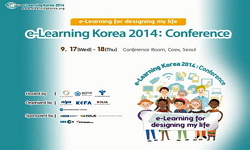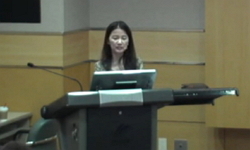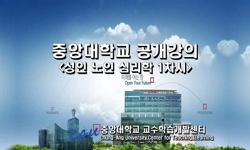본 연구에서는 국가 단위 대규모의 데이터 (2013~2014년 국민건강영양조사 자료)를 활용하여 성인 남녀별 외식으로부터 섭취하는 열량의 사분위에 따른 군간 일반사항, 영양소 및 식품군별 섭...
http://chineseinput.net/에서 pinyin(병음)방식으로 중국어를 변환할 수 있습니다.
변환된 중국어를 복사하여 사용하시면 됩니다.
- 中文 을 입력하시려면 zhongwen을 입력하시고 space를누르시면됩니다.
- 北京 을 입력하시려면 beijing을 입력하시고 space를 누르시면 됩니다.
https://www.riss.kr/link?id=A102636525
- 저자
- 발행기관
- 학술지명
- 권호사항
-
발행연도
2016
-
작성언어
Korean
- 주제어
-
KDC
590
-
등재정보
KCI등재,SCOPUS
-
자료형태
학술저널
- 발행기관 URL
-
수록면
482-494(13쪽)
-
KCI 피인용횟수
5
- 제공처
- 소장기관
-
0
상세조회 -
0
다운로드
부가정보
국문 초록 (Abstract)
본 연구에서는 국가 단위 대규모의 데이터 (2013~2014년 국민건강영양조사 자료)를 활용하여 성인 남녀별 외식으로부터 섭취하는 열량의 사분위에 따른 군간 일반사항, 영양소 및 식품군별 섭취 상태를 분석하고, 영양소별 섭취밀도 및 영양의 질적 지수를 평가하였으며, 그 결과는 다음과 같다. 남녀 모두에서 외식을 통한 열량의 섭취 정도가 높은 성인일수록 연령이 유의적으로 낮았고, 음주 빈도, 가구소득 및 교육수준이 유의적으로 높은 결과를 보였다. 또한 외식을 통한 열량 섭취가 높은 남녀 성인에서 전체 열량섭취량 및 지방의 섭취 밀도는 높게 나타난 반면, 식이섬유소, 비타민 B1, 칼슘, 인, 칼륨 및 철과 같은 미량 영양소의 섭취 밀도는 유의적으로 낮은 결과를 보였으며, 비타민 B1, 칼슘, 인 및 철의 INQ와 같은 식사의 질 지수 역시 유의적으로 낮게 나타났다. 식품군별 섭취 비율을 분석시 남녀모두에서 외식을 통한 열량 섭취가 높은 군에서 육류, 음료 및 주류의 섭취 비율이 유의적으로 높았던 반면, 곡류, 채소류, 어패류 및 해조류의 섭취 비율은 유의적으로 낮게 나타났다. 이와 같은 결과는 식생활에서 외식이 차지하는 비율이 계속적으로 증가하고 있는 현 시점에서, 외식을 많이 하는 대상자와 관련된 전반적인 영양소 및 식품군별 섭취상태를 파악할 수 있는 기초자료로써 활용될 것으로 예상된다.
다국어 초록 (Multilingual Abstract)
Purpose: The objective of the present study was to evaluate nutrient and food group intakes in Korean adults according to energy intake from eating-out. Methods: This study was a cross-sectional study based on the 2013~2014 Korea National Health and N...
Purpose: The objective of the present study was to evaluate nutrient and food group intakes in Korean adults according to energy intake from eating-out. Methods: This study was a cross-sectional study based on the 2013~2014 Korea National Health and Nutritional Examination Survey, and study subjects were 5,186 males (2,151) and females (3,035) aged 19~64 years. Energy intake from eating-out was analyzed using the 24-hour dietary recall method, and groups were classified by quartile according to energy intake from eating-out. Results: Subjects who had more energy intake from eating-out tended to be younger, highly educated, have a higher income, and have higher alcohol consumption. Total energy intake and fat intake density of the highest quartile group of energy intake from eating-out were higher than those of the other groups. However, fiber, vitamin B1, calcium, phosphorus, potassium, and iron intake density levels were significantly lower in the highest quartile group of energy intake from eating-out. The highest quartile group of energy intake from eating-out consumed significantly more meat and beverages compared to the other groups. In addition, regarding diet quality (Index of nutritional quality), significantly lower vitamin B1, calcium, phosphorus, and iron levels were observed in the highest quartile group of energy intake from eating-out compared to those in the other groups. Conclusion: In conclusion, in Korean adults, consumption of eating-out decreased dietary quality, including vitamin B1, calcium, phosphorus, and iron levels. Further studies are needed to confirm these findings.
참고문헌 (Reference)
1 한경수, "한국식품연감 내용 분석에 의한 한국 외식산업 현황분석" 한국식생활문화학회 19 (19): 313-325, 2004
2 김명관, "한국 중년 직장인의 나트륨 과다섭취 특성과 영향요인" 한국산학기술학회 15 (15): 2923-2929, 2014
3 정상진, "한국 성인의 점심식사에서 가정식, 상업적 외식 및 급식의 영양평가: 2001 국민건강·영양조사 자료의 분석" 한국영양학회 39 (39): 841-849, 2006
4 이정원, "직업 남성의 잦은 외식과 아침결식이 체질량지수 및 영양소 섭취에 미치는 영향 - 2001년 국민건강영양조사자료 분석" 대한지역사회영양학회 14 (14): 789-797, 2009
5 오현정, "외식관련 SNS 이용 속성이 소비자의 외식동기, 외식만족도 및 삶의 질에 미치는 영향" 한국식품영양학회 27 (27): 1182-1192, 2014
6 정유선, "외식 영양표시 제도에 대한 소비자의 사용동기, 장애요인과 확대 실시에 대한 인식" 한국식생활문화학회 30 (30): 190-196, 2015
7 구슬, "성인의 외식 빈도와 관련된 식습관 및 생활습관 요인 분석" 한국식품영양과학회 42 (42): 705-712, 2013
8 유진아, "건강관심도에 따른 외식업체 메뉴의 영양 표시 인지도" 한국식품영양학회 24 (24): 282-290, 2011
9 이성림, "가구 형태가 식품 산업별 음식물비 소비지출패턴에 미치는 영향" 한국소비문화학회 17 (17): 85-104, 2014
10 권용석, "Trends in nutrient intakes and consumption while eating-out among Korean adults based on Korea National Health and Nutrition Examination Survey (1998-2012) data" 한국영양학회 8 (8): 670-678, 2014
1 한경수, "한국식품연감 내용 분석에 의한 한국 외식산업 현황분석" 한국식생활문화학회 19 (19): 313-325, 2004
2 김명관, "한국 중년 직장인의 나트륨 과다섭취 특성과 영향요인" 한국산학기술학회 15 (15): 2923-2929, 2014
3 정상진, "한국 성인의 점심식사에서 가정식, 상업적 외식 및 급식의 영양평가: 2001 국민건강·영양조사 자료의 분석" 한국영양학회 39 (39): 841-849, 2006
4 이정원, "직업 남성의 잦은 외식과 아침결식이 체질량지수 및 영양소 섭취에 미치는 영향 - 2001년 국민건강영양조사자료 분석" 대한지역사회영양학회 14 (14): 789-797, 2009
5 오현정, "외식관련 SNS 이용 속성이 소비자의 외식동기, 외식만족도 및 삶의 질에 미치는 영향" 한국식품영양학회 27 (27): 1182-1192, 2014
6 정유선, "외식 영양표시 제도에 대한 소비자의 사용동기, 장애요인과 확대 실시에 대한 인식" 한국식생활문화학회 30 (30): 190-196, 2015
7 구슬, "성인의 외식 빈도와 관련된 식습관 및 생활습관 요인 분석" 한국식품영양과학회 42 (42): 705-712, 2013
8 유진아, "건강관심도에 따른 외식업체 메뉴의 영양 표시 인지도" 한국식품영양학회 24 (24): 282-290, 2011
9 이성림, "가구 형태가 식품 산업별 음식물비 소비지출패턴에 미치는 영향" 한국소비문화학회 17 (17): 85-104, 2014
10 권용석, "Trends in nutrient intakes and consumption while eating-out among Korean adults based on Korea National Health and Nutrition Examination Survey (1998-2012) data" 한국영양학회 8 (8): 670-678, 2014
11 Binkley JK, "The relation between dietary change and rising US obesity" 24 (24): 1032-1039, 2000
12 Clemens LH, "The effect of eating out on quality of diet in premenopausal women" 99 (99): 442-444, 1999
13 Lampuré A, "Sociodemographic, psychological, and lifestyle characteristics are associated with a liking for salty and sweet tastes in French adults" 145 (145): 587-594, 2015
14 Méjean C, "Socio-economic, demographic, lifestyle and health characteristics associated with consumption of fatty-sweetened and fattysalted foods in middle-aged French adults" 105 (105): 776-786, 2011
15 Guthrie JF, "Role of food prepared away from home in the American diet, 1977-78 versus 1994-96: changes and consequences" 34 (34): 140-150, 2002
16 Ministry of Health and Welfare, Korea Centers for Disease Control and Prevention, "Korea Health Statistics 2014: Korea National Health and Nutrition Examination Survey (KNHANES VI-2)" Korea Centers for Disease Control and Prevention 2015
17 권용석, "Investigation of variations in energy, macronutrients and sodium intake based on the places meals are provided - Using the Korea National Health and Nutrition Examination Survey (KNHANES, 1998-2009) -" 한국영양학회 8 (8): 81-93, 2014
18 Adams J, "Frequency and socio-demographic correlates of eating meals out and take-away meals at home: crosssectional analysis of the UK national diet and nutrition survey, waves 1-4 (2008-12)" 12 (12): 51-, 2015
19 이원준, "Factors Associated with a Low-sodium Diet: The Fourth Korean National Health and Nutrition Examination Survey" 한국역학회 35 : 1-7, 2013
20 Vandevijvere S, "Eating out of home in Belgium : current situation and policy implications" 102 (102): 921-928, 2009
21 Orfanos P, "Eating out of home and its correlates in 10 European countries. The European Prospective Investigation into Cancer and Nutrition (EPIC) study" 10 (10): 1515-1525, 2007
22 Lachat C, "Eating out of home and its association with dietary intake : a systematic review of the evidence" 13 (13): 329-346, 2012
23 Kant AK, "Eating out in America, 1987-2000: trends and nutritional correlates" 38 (38): 243-249, 2004
24 Ministry of Health and Welfare (KR), "Dietary reference intakes for Koreans 2015" Ministry of Health and Welfare 2016
25 Choi KH, "Associations between excessive sodium intake and smoking and alcohol intake among Korean men : KNHANES V" 12 (12): 15540-15549, 2015
26 Sorenson AW, "An index of nutritional quality for a balanced diet. New help for an old problem" 68 (68): 236-242, 1976
27 Hansen RG, "An index of food quality" 31 (31): 1-7, 1973
28 Bes-Rastrollo M, "A prospective study of eating away-from-home meals and weight gain in a Mediterranean population : the SUN(Seguimiento Universidad de Navarra)cohort" 13 (13): 1356-1363, 2010
29 박훈지, "A Study of Association Dining-out, Nutritional Intakes and Health Risk Factors among Korean Women using the Data of Korean National Health and Nutrition Examination Survey (KNHANES Ⅵ)" (사)한국조리학회 21 (21): 138-146, 2015
30 이창현, "50세 이상 성인 및 노인의 인구사회학적 특성에 의한 외식 소비 행태 변화: 2001, 2011 국민건강영양조사 자료 분석" 동아시아식생활학회 24 (24): 301-314, 2014
동일학술지(권/호) 다른 논문
-
제2형 당뇨 모델 db/db 마우스에서 4개월의 자화수 섭취 후 혈당, 항산화 상태 및 세포 DNA 손상 개선 효과
- 한국영양학회
- 이혜진(Lee, Hye-Jin)
- 2016
- KCI등재,SCOPUS
-
쑥 (Artemisia princeps P.) 추출물이 고지방식이를 급여한 흰쥐의 대사장애 및 아디포카인 조절에 미치는 영향
- 한국영양학회
- 김윤혜(Kim, Yun-Hye)
- 2016
- KCI등재,SCOPUS
-
곤드레 (Cirsium setidens) 에탄올 추출물의 알코올성 지방간 손상 억제 효과
- 한국영양학회
- 김은혜(Kim, Eun-Hye)
- 2016
- KCI등재,SCOPUS
-
두릅순 에탄올 추출물의 인간유래 피부각질형성세포와 피부섬유아세포에서의 자외선에 의한 광노화 억제효과
- 한국영양학회
- 양지원(Yang, Jiwon)
- 2016
- KCI등재,SCOPUS
분석정보
인용정보 인용지수 설명보기
학술지 이력
| 연월일 | 이력구분 | 이력상세 | 등재구분 |
|---|---|---|---|
| 2023 | 평가예정 | 해외DB학술지평가 신청대상 (해외등재 학술지 평가) | |
| 2020-01-01 | 평가 | 등재학술지 유지 (해외등재 학술지 평가) |  |
| 2013-07-24 | 학술지명변경 | 한글명 : 한국영양학회지 -> Journal of Nutrition and Health외국어명 : The Korean Journal of Nutrition -> Journal of Nutrition and Health |  |
| 2010-01-01 | 평가 | 등재학술지 유지 (등재유지) |  |
| 2008-01-01 | 평가 | 등재학술지 유지 (등재유지) |  |
| 2006-01-01 | 평가 | 등재학술지 유지 (등재유지) |  |
| 2001-01-01 | 평가 | 등재학술지 선정 (등재후보2차) |  |
| 1998-07-01 | 평가 | 등재후보학술지 선정 (신규평가) |  |
학술지 인용정보
| 기준연도 | WOS-KCI 통합IF(2년) | KCIF(2년) | KCIF(3년) |
|---|---|---|---|
| 2016 | 0.86 | 0.86 | 1.03 |
| KCIF(4년) | KCIF(5년) | 중심성지수(3년) | 즉시성지수 |
| 1.18 | 1.11 | 1.778 | 0.12 |






 ScienceON
ScienceON DBpia
DBpia






